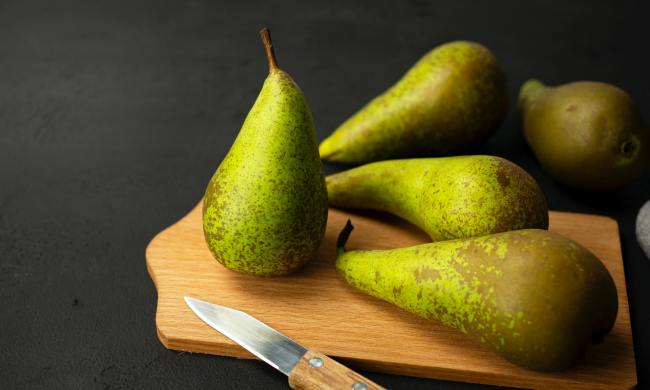Aloe plants are one of the most popular indoor succulents, and for good reason! They’re hardy and easy to grow, useful for treating minor skin irritation and cuts, and they have a lovely and interesting shape. Plus, it’s one of the easiest plants to propagate — and who wouldn’t want to create more aloe vera for its soothing gel that can be used to treat burns and skin irritations? If you want to learn how to propagate aloe vera, it’s not that hard. Ahead, here’s what you need to know to successfully propagate aloe vera.
The easiest way to propagate aloe vera

The easiest way to propagate aloe vera is by division — that’s to say, taking an offshoot growing at the base of your aloe vera plant. You can simply pluck off a pup or use a clean knife to carefully remove it from the mother plant. The best time to remove the offshoot is when the leaves are fleshy and have formed a distinct rosette shape. It also helps if the pup already has roots connected to the mother plant. When propagating the pup, keep as much of the established root system as possible. Place your offshoot into a fresh cactus mix and allow the roots to settle after watering deeply. If you have an aloe with multiple pups, you can remove your entire plant from its planter for a better view of the roots.
How do you propagate aloe vera without roots?
It’s possible to propagate aloe vera without roots — in fact, you can even grow it from cuttings, which we’ll cover more extensively below. Propagating aloe vera pups without roots is very feasible, but you have to be careful with watering. If you find yourself with rootless aloes, you can place them onto your potting mix as usual and use stones or stakes to keep them upwards. Avoid watering them until about two weeks or whenever they have roots.
Other ways to propagate your aloe vera plant

Can you grow aloe vera from a cutting?
While root division is the easiest way to propagate aloe, you can also grow it from a cutting. But because the leaves consist of so much water, they can be prone to rot when you propagate with just a cutting. Therefore, your chances of a leaf-cutting taking root are rather slim with this route.
Still, it’s possible to take a successful aloe cutting. Start by making a downward cut on a leaf with a sterile pruning shear. Give your cutting a few days to create a film over the wound to prevent rot. Then, place the cut-side downwards into a cactus mix, making sure to give your plant plenty of drainage.
To encourage rooting, consider applying rooting hormone before potting up your aloe. After situating your cutting, leave the planter in a warm, sunny location and water when your potting mix dries out. Don’t fret if your leaf shrivels — this is expected to happen as your plant develops roots.
Can you replant a broken aloe leaf?
Say you accidentally break off your aloe leaf. While you can simply harvest the gel and call it a day, you can actually replant the broken aloe leaf — just think of it like taking a leaf cutting. As we mentioned above, let the broken end form a callus and place the broken end of your leaf into a fresh cactus potting mix.
Can you root aloe vera cuttings in water?
Aloe vera cuttings do best in soil, especially if they haven’t developed roots. If it already has roots, an aloe vera cutting can indeed grow longer roots in water. Technically speaking, you could raise your aloe vera hydroponically by submerging its roots into water, but you’ll want to keep the leaves clear of water. Additionally, you need to consider factors such as light, oxygen, and fertilizer when you grow your aloe vera in water.
Can you grow aloe vera from seed?
Growing aloe vera from seed is possible, but it requires lots of patience. If you want to grow your aloe vera from seed, you’ll have a long road ahead. You’ll need to give your plant at least eight hours of bright light to facilitate germination — you will likely want to invest in grow lights or leave your plant outdoors.
Common propagation problems to look out for

Sometimes propagation fails for seemingly no reason, but there are a few common problems you can be on the lookout for to give your new aloe plant the best possible odds. Disease and fungal infections is one potential problem. While mature aloe plants are generally hardy and can recover quickly from illness, young plants that haven’t become established yet are more vulnerable.
If you’re propagating from a cutting, clean your tools thoroughly to avoid spreading bacteria or fungal spores. Be sure to use fresh soil when planting your propagated aloe, and take care to avoid overwatering them (as overwatering can both weaken the plant and encourage fungal infections). Pests can become an issue for the same reason. An insecticidal soap or neem oil can keep the pests at bay until your new aloe plant is strong enough to resist them.
Propagating an aloe vera plant is extremely simple, especially if you have rooted pups that are ready for cutting or plucking. Plus, you’ll be able to grow new aloe from cuttings and seeds as well, just in case you’re curious about these techniques. However you propagate your aloe vera, you can do it with ease and enjoy the versatile gel once your leaves are ready to be harvested.




